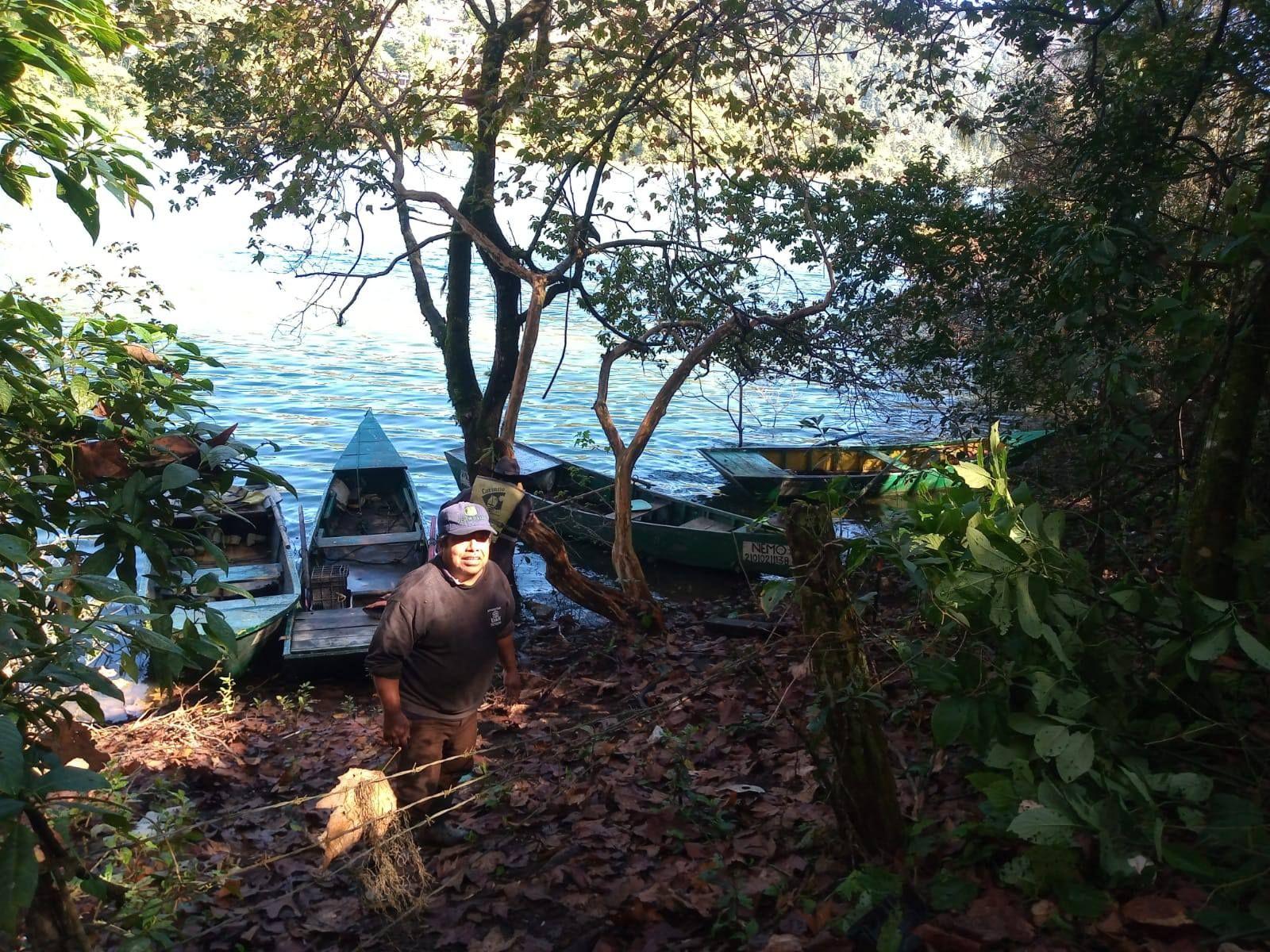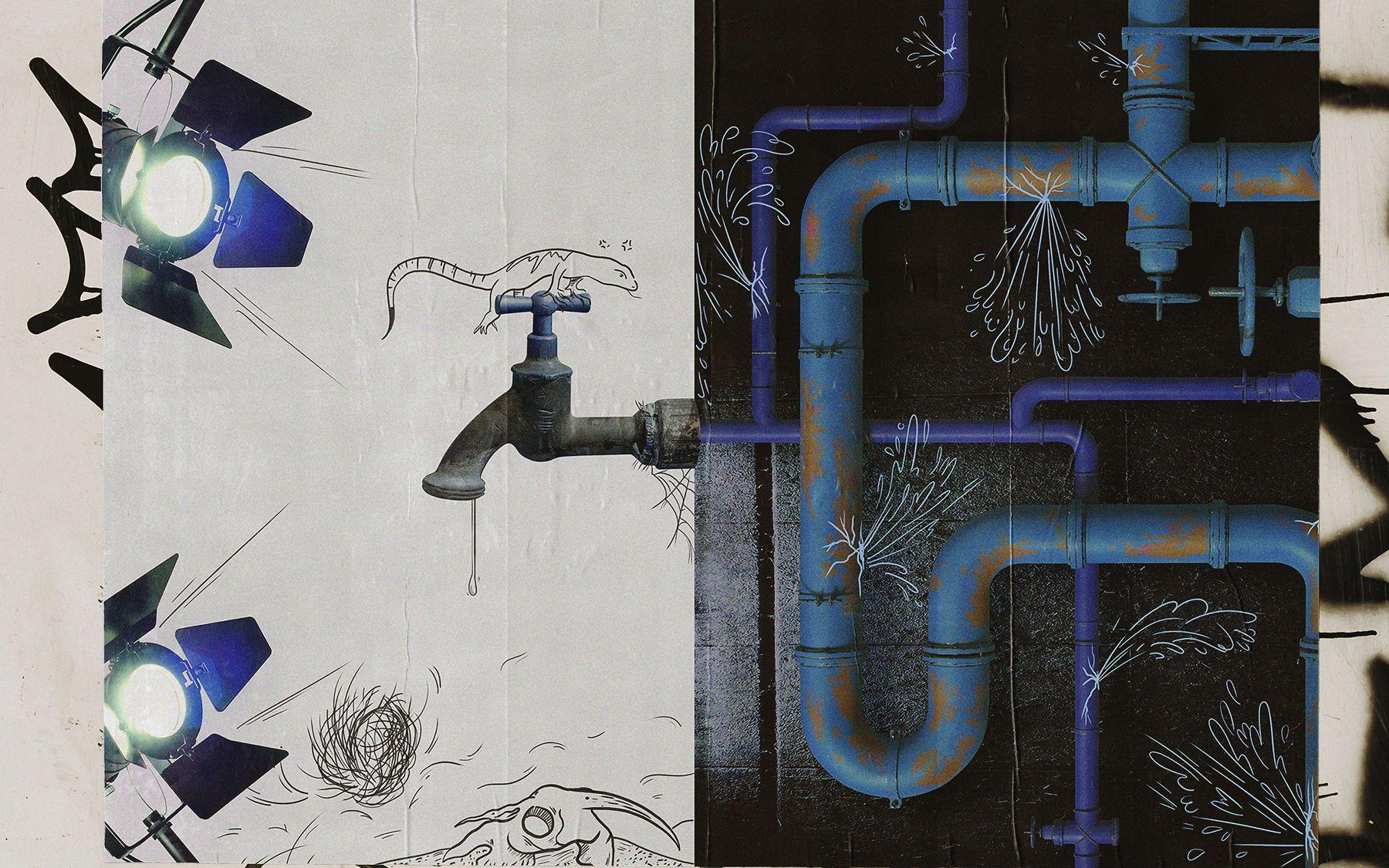There are trees around the Necaxa dam that were planted more than 20 years ago by fishermen from the town of Patoltecoya, in Puebla. This is the same time that they have been collecting garbage in this body of water from the municipal seat of Huauchinango.
The impacts of pollution resulted in Recommendation 126/2024 of the National Human Rights Commission (CNDH) last August, in which the National Water Commission (Conagua) and the municipalities of Huauchinango and Juan Galindo de Puebla were urged to repair environmental damage caused by wastewater discharges in the Necaxa dam.
“Right now, due to the rainy season, waste arrives from the Huauchinango city council, it is the one that harms us the most and, for example, those who live on the banks of the streams are the ones who throw garbage at us and reach the water,” says Ángel Vargas, legal representative of the Patoltecoya fishermen.
As it is a dam, the catch of carps and mojarras is sold for retail or personal consumption, so the members of the fishing cooperative are also engaged in other jobs such as agriculture, masonry, commerce, among others.
Currently, 45 fishermen work voluntarily on conservation days that consist, mainly, of the reforestation and maintenance of ash, poplar, ocote and oak trees, as well as the collection of garbage by category, which includes transforming organic waste into fertilizers.
Their main link has been with the National Commission for Protected Natural Areas (Conanp), from which they receive trees, but they are often not optimal since fishermen require shrubs with a minimum height of 60 centimeters to grow and often this is not true.
Therefore, they believe that there is a lack of government support for these efforts to translate into better results.
“The municipal authorities only send the truck to take the garbage away, but that's all they have to do, although sometimes they have to send us a truck to collect it,” Vargas explains.

Years of pollution
Almost a year after Recommendation 126/2024 of the CNDH, on June 6, the government of Puebla shared in a statement that the State Water and Sanitation Commission participated in a working group to give attention to the Necaxa dam.
“At the working table, the director general of CEASPUE, Lauro Sánchez López, reported that from this instance they will collaborate with municipalities for water sanitation in their demarcations, through water infrastructure projects that contribute to better services and prevent the outbreak of diseases,” the statement said.
However, in Recommendation 126/2024, the CNDH listed actions such as involving various sectors; inventorying residual discharge points and identifying those with a valid concession to differentiate them from clandestine ones; as well as providing a specialized course in human rights to personnel working in the area. Actions that are still pending so far.
For their part, a group of researchers from the Benemérita Autonomous University of Puebla (BUAP) and the National Polytechnic Institute (IPN) came last May to evaluate the dam system formed by Necaxa, Nexapa and Tenango. This was the second time they came after a visit last September to collect water, sediment and lily samples.
This work is carried out with the purpose of developing a management plan that improves water quality and takes advantage of aquatic weed.

Against pollution
Although the pollution problem in the Necaxa dam has been reported before, only the fishermen of Patoltecoya have been consistent in their work for two decades. Several of the trees they planted first reach more than 20 meters in height.
“When we plant trees, the fog settles down, it rains more and there is quality oxygen,” Vargas answers when asked about the motivation to do this work.
Among the actions that have received the most recent response is birdwatching, which consists of tours to observe birds that reach prey, such as ducks, herons and eagles. Fishermen insist that their main problem is garbage during rainy seasons, so taking these birdwatching tours requires that the area be kept clean.
“But we need the support of the authorities, I wish our voice would reach them to support us in the problem,” Vargas insists.





Comentarios (0)